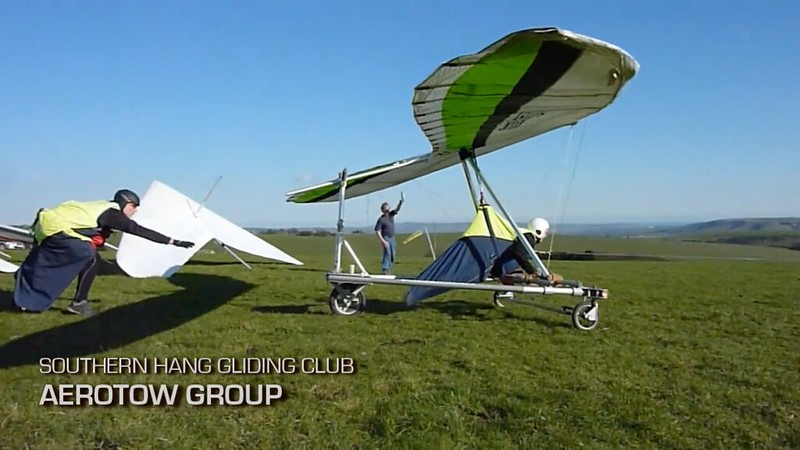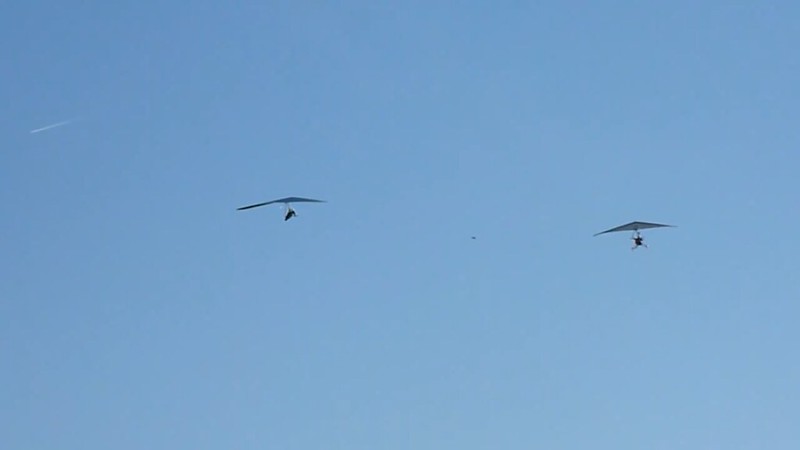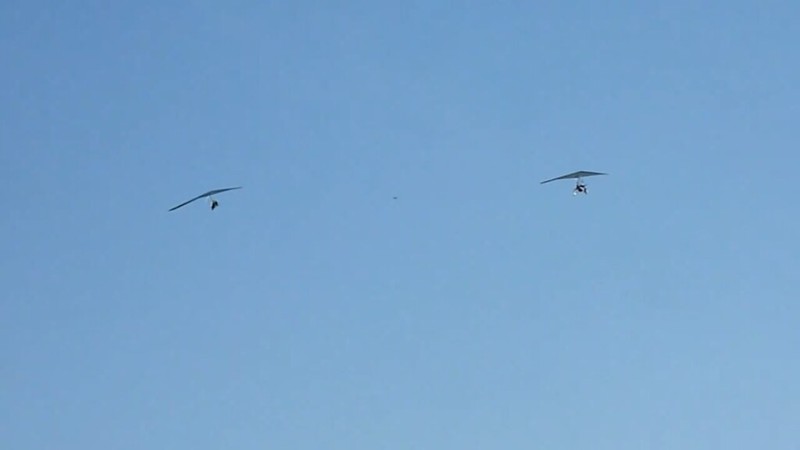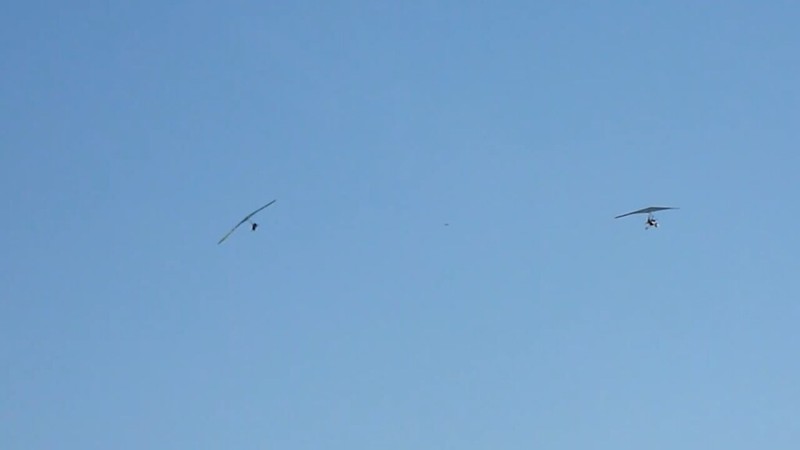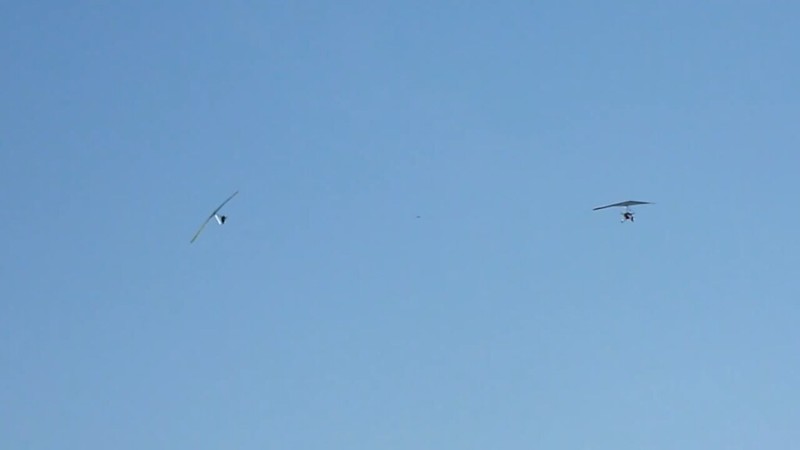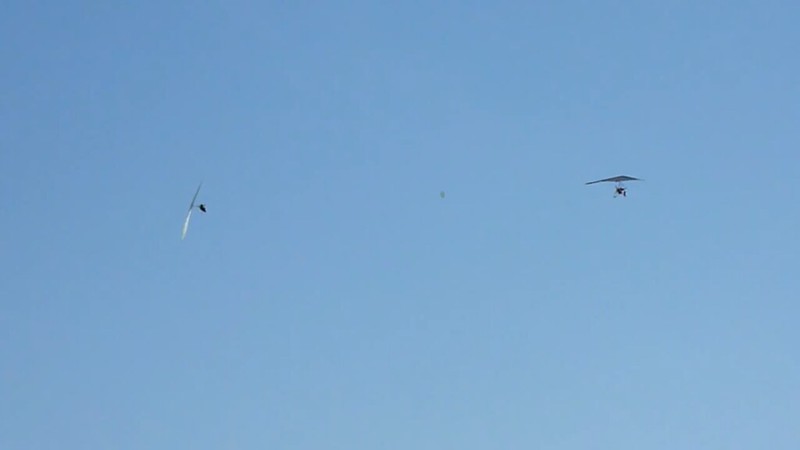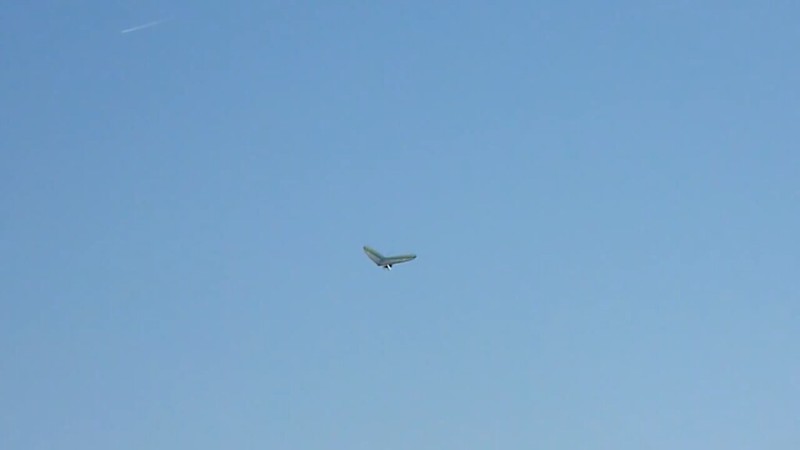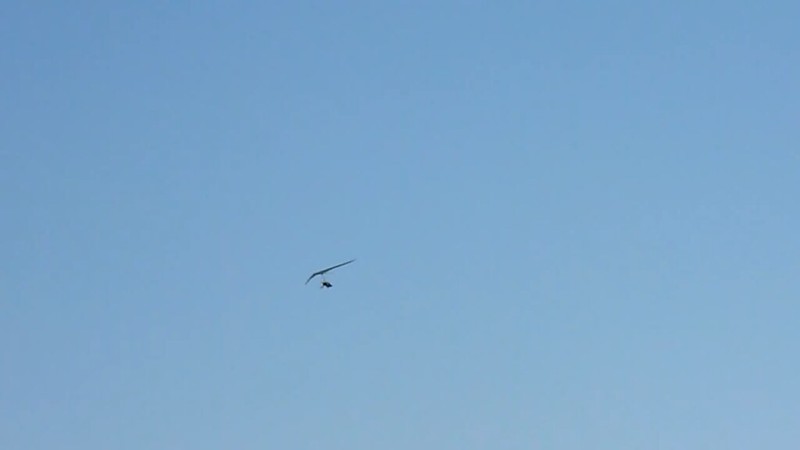http://www.hanggliding.org/viewtopic.php?t=21465
Wish it had been the downtubes
Boy Oyng - 2011/04/09 22:06:36 UTC
Wish it had been the downtubes
I wish it had been the basetube - on which you were flying.
This is a report of an accident...
Nope.
...that occurred in February of 2010. I'm not going to name names or even the place where the accident happened. I want to speculate freely (and do some whining) without having to concern myself with anyone's reputation.
Which leaves other students wide open getting THEIR arms destroyed.
Brief description of accident:
Nope.
I was a student...
Right. You were a STUDENT.
...attempting a footlaunch tow on a winch system.
Why? Was it necessary for the purpose of the exercise to foot launch? Did circumstances preclude use of a dolly? If you had to do it over again would you have used a dolly?
I had wheels on the control bar.
Kinda depends on how one defines "wheels".
The protocol for this towing system is to signal that one is ready for the tow,
How do you know you're ready for tow? Are you hooked in? Got your leg loops? Are you sure? When was the last time you checked? How did you check? What's your signal?
...to resist being pulled by the line until that's no longer possible, then to walk, jog, and run until becoming airborne.
Yeah, a nice safe GRADUAL TRANSITION to tow. Avoid pop starts at all costs - they're known to deprive the pilot of control.
I...
...assumed I was hooked in and...
...signaled my readiness to begin the tow,
...the winch driver assumed I was hooked in,
the motor revved, the line became taught,
Taut. There wasn't a whole lot of stuff becoming taught here.
...and I began the walk, jog, run. On this occasion, I seemed to gain no altitude after becoming airborne. I estimate that I was never more than a few feet off the ground, and did not have the altitude to attempt to land on my feet.
That's alright. Nobody EVER has enough altitude to land on his feet.
The tow was aborted...
***WHY?***
- WHO aborted it? You or your "instructor"?
- If the latter and it needed to be aborted why didn't you abort it?
- What would've happened in the opposite scenario?
...and I came in for a wheel landing. Instead of rolling,
Instead of CLIMBING - as per the agreed upon FLIGHT PLAN.
...however, the wheels grabbed into the ground.
Which wouldn't have been anywhere nearby if this asshole had done his fucking job.
The glider stopped instantly, but I kept going, with both arms outstretched in anticipation of the roll-out. After the impact, it was immediately obvious that my right humerus was broken, and I also had significant pain in my left elbow. It turned out later that my humerus had basically exploded and that part of my left elbow joint was pulverized (the medical term, I learned, is "comminuted.")
Pilot background:
Student pilot returning to sport after decade-plus absence, working to regain H2 rating. Glider was an 11 Meter Pulse. Although this was my first tow of the day, it was to be my 7th or 8th tow overall. It was my second tow on this glider. All my prior tows had been on a Falcon. This was my first tow attempt with a new (used) Tracer harness. My only prior experience with that harness (or any cocoon...
Pod.
...harness) was one day practicing on the bunny hill. In fact, it was to be only my second day of flying that particular glider (I had owned an 11 Meter Pulse in my prior hang gliding experience). I'm 6'3" and weighed about 200 pounds at the time.
Conditions:
Winds almost nonexistent, but I was facing into whatever wisps there were. Temperature (if I recall correctly) was in the sixties. The day was clear, though it was following some days of rain, so the ground was moist.
None of that is particularly relevant to the issue.
Conjecture as to cause:
There's no need whatsoever to conjecture as to the cause. This one's pretty black and white.
I find this kind of interesting to think about. At first, I wondered, "Why didn't I gain altitude?... If only I'd gotten up in the air, this wouldn't have happened." But really, I might well have had a perfectly acceptable tow up and flight, only to misjudge my landing and end up on my wheels, in which case the same thing would very likely have happened.
- Again, I think we're playing a bit fast and loose with the term "wheels" here.
- So how badly would you have been hurt, in either scenario, if you had started and finished prone and on the basetube - with or without wheels?
I am not not sure why I didn't gain altitude.
Really? This one's a no brainer.
It is very possible I simply had the glider at the wrong attitude.
Nah.
That's what the instructor/tow operator told me: that I was pushing out.
The "instructor/tow operator" is TOTALLY full of shit.
My memory is that I pushed out because I wasn't gaining altitude.
Instinctive but not a great move on tow - despite the bullshit you read on Wallaby's website - especially if your driver's totally incompetent (which yours was). A whole bunch of people have died doing that - including one of our Region 9 Directors and his tandem clinic Hang Four student.
I thought, "I'm not gaining altitude, maybe I'm pulling in, so I'll let the bar out."
Nah. If the shithead at the other end of the rope had been doing his job you'd have been going up like a rocket no matter what you were doing.
I had had, if I recall correctly, two prior aborted tows on previous days. One of them was aborted because I had the glider at the wrong angle.
What do you mean "the wrong angle"? High or low? If it was too high and he reduced power you'd have been seriously stalled. If it was too low you'd have had real crisp airspeed and probably known what to do with it and there probably would've been no good reason to abort.
But the other, the tow operator told me, was because he hadn't applied enough power to the winch. From my beginner's perspective, they felt exactly the same;
Maybe that's 'cause they WERE exactly the same.
I just didn't go up.
No shit.
So, from my own perspective, it's equally likely that I goofed up, or the tow operator did, or both of us did. I don't know, and I wouldn't expect the operator to admit it if it was his fault considering the consequences. In any case, I know I pushed out some at the end, so certainly contributed to the situation.
Bullshit. There wouldn't have BEEN a situation if the fucking "instructor" had been doing his fucking job.
But, as I said above, it was really the wheels that turned (!?) what should have been a minor embarrassment into a bone-snapping disaster. And here, I believe that the instructor may share some culpability.
Share?
I had just recently purchased the glider, harness, and helmet from the instructor. As a re-training student, I definitely still needed wheels (indeed, I intended to use them FAR into the foreseeable future and was looking to purchase or make a pair).
Know what?
Dennis Pagen - 1991/01
Landings and probably bad landings will always be with us as long as we take to the sky and insist on using our feet as landing gear.
Gil Dodgen - 1995/01
All of this reminds me of a comment Mike Meier made when he was learning to fly sailplanes. He mentioned how easy it was to land a sailplane (with spoilers for glide-path control and wheels), and then said, "If other aircraft were as difficult to land as hang gliders no one would fly them."
http://ozreport.com/forum/viewtopic.php?t=11946
Once again with wheels
Rich Jesuroga - 2008/05/19 17:49:23 UTC
A few years back a friend who had good landing skills missed ONE. Stuck his speed bar in the dirt and whacked hard. He swung through the control bar and hit the top of his helmet on the keel buckling his neck. He was a quadriplegic for eight months before committing suicide. Would wheels have worked? YES - no debate by those who were there and witnessed the accident.
There's NOBODY who EVER doesn't still need wheels.
Until the day of the incident, I had always used those large, rigid black wheels.
Sounds like Mike Robertson's.
That sonuvabitch did EXACTLY the same thing to me. 'Cept I dolly launched so had my hands on the basetube and it WAS the downtube (singular) and not my arm.
But this wasn't Mike 'cause he IS smart enough to put you ON a dolly and OFF OF your feet - and he'd have never had you on those wheels.
On this day, when I asked for wheels, the large wheels were not at hand, so the instructor handed me smaller, two-piece wheels that snap together over the control bar. I strongly believe that the combination of smaller wheel diameter, plus the break-apart nature of the wheels, plus the rain-softened ground is what caused the failure of the wheel to roll.
Do ya think?
I noticed after I was helped up that at least one of the wheels had separated. And I believe the instructor was more likely to know the conditions of the site and the suitability of the wheels for that ground.
These were sold as "snap-on" wheels. Everybody IMMEDIATELY started referring to them as "snap-offs". I used them as is for a while and they would pop off during hang checks and damn near every time the basetube went down when I landed (which was damn near every time I landed). Didn't take long before I put sheet metal screws through the "lock" tabs and used them as slide-ons instead of snap-ons. They were light and aerodynamic but it didn't take too hard of a landing to shatter them and they weren't cheap and I eventually said fuckit, put the Finsterwalder pneumatics on, and never looked back.
Am I saying "This is all the instructor's fault"? Absolutely not. I truly believe that the pilot is responsible for his/her own equipment and its operation. So, at the same time that I'm asking myself, "Why did he give me those wheels?", I'm also telling myself, "You should've held out for the larger wheels."
You should never have been put in that position.
But this leads to what I find an interesting philosophical discussion. The student/instructor relationship exists on trust.
In REAL aviation, maybe...
Zack C - 2010/12/13 04:58:15 UTC
I had a very different mindset too back then and trusted the people that made my equipment. Since then I've realized (largely due to this discussion) that while I can certainly consider the advice of others, I can't trust anyone in this sport but myself (and maybe the people at Wills Wing).
But in hang gliding there may be one or two of these motherfuckers that you can trust but you really can't afford to.
To some degree, the student must rely on the instructor's judgment, and yet instructors do make mistakes, and the instructor can only control so much.
Or, in this case, fuck up everything he touched. Let's shoot the goddam "instructor" and have a do over.
- You:
-- have the same background as before
-- live a million miles from nowhere in North Dakota
-- own the winch
- Your best buddy Bob - who knows nothing about hang gliding or towing beyond what you've told him - is gonna drive.
- You've ordered a pair of Robertson wheels but they didn't come in Friday's mail, and all you have is a pair of these snap-offs and the ground is wet and soft.
Do you head out or wait until next weekend?
Maybe my impact was harder because I pushed out at the end. Maybe the wheels would have rolled and held for a smaller, lighter pilot. Maybe, maybe, maybe, maybe. The only time I would hold somebody else accountable for my own hang gliding accident is if they ran into me or didn't yield right of way on a ridge or some other gross violation.
Yeah, that's one HUGE reason why none of these assholes is ever sued or held accountable in any way and why lotsa this bullshit NEVER gets any better. These WERE gross violations. Pilots always have an ego/testosterone thing going in overdrive and ALWAYS blame themselves for WAY too much.
Nevertheless, I would hope in the future that the instructor won't give small wheels to big students on days when the ground is softer than usual!
What's the incentive? No skin off HIS nose. (Did he get paid before or after the "lesson"?) I would hope that in the future this "instructor" wouldn't be an instructor and find some niche in which he's not a direct threat to other people's lives and well-being.
We always talk about not working with more than one new thing at a time on a flight, but how is this realistic for a student? Everything is new to a student, even if he or she has some experience. For a student, the glider is new, the helmet is new, the harness is new, the sense of flight is new.
PRE CISELY. This "only one new thing at a time" bullshit is a bunch of crap that exists ONLY in hang gliding amongst people too fucking stupid to realize that it's better to swap out a shitrigged pair of wheels, shitrigged primary and secondary releases, and a shitrigged weak link all at once before you leave the setup area. And for the overwhelming majority of hang gliding people replacing one shitrigged piece of equipment once every twenty years still translates to way more anxiety than they can handle.
The only thing that was "first time" for me on this nonflight was using that harness in a tow situation, but everything else was still all new. And it seems unlikely (though not inconceivable) that the harness had anything to do with the accident.
Nah, go with inconceivable - likewise if you were wearing a different color T-shirt. (Many years ago I tried to get this concept through to Head Trauma but totally and obviously failed. (Nah, actually I instantly realized the guy was a total moron and didn't even try.))
OK, the lousy (for the conditions) snap-on wheels...
No. Stop at lousy. No asterisks.
...were also a first, but once they were on, it didn't matter if they were my first use or my thousandth. Although I knew that larger wheels are generally preferable, my experience was insufficient to recognize that these wheels were likely to fail in the soft-ground conditions of that site on that day. And frankly, I think it's very debatable to expect the instructor to think of that particular detail.
BULLSHIT. A goddam five year old kid with a little tricycle experience could seen that one coming a mile away.
Still, if I hold myself responsible for not knowing that, then the instructor also shares that responsibility.
It's not a case of SHARING. I don't care if you were a very current Hang Five learning to foot launch tow. This asshole was functioning as your instructor in this situation, he provided the equipment, it wasn't safe, it's totally his responsibility.
- You're paying John Heiney for an aerobatics clinic but you don't have a chute.
- He provides one for the day for an extra five bucks.
- You:
-- arrive, what you can see of it looks fine, you stuff it in your container
-- blow a maneuver and need it but it explodes 'cause it was a cheap uncertified knockoff from China
- John's fully responsible for what happens after that and a jury's gonna properly conclude so.
Maybe, however, this is purely and simply a case of "s**t happens." That's why they're called accidents.
NO. With the possible exception of thermal and shear induced tumbles, shit DOES NOT HAPPEN IN HANG GLIDING. There are NO ACCIDENTS. This sport is quite dangerous enough already without them.
Consequences:
Well, I've given up hang gliding for good. If I were the only one in the equation, I would continue (though probably not with the same instructor for reasons I'll mention below), but I have a wife and child. My wife already strongly disliked my involvement in this sport (in part because I'd already broken one arm pursuing it; that time was unequivocally my fault),
Wild guess... Landing with your hands on the downtubes?
and I simply won't subject her to any more stress and hardship worrying every weekend that she might get another one of "those calls." We don't get everything we want in life, and I'm choosing to give up my lifelong flight dream. And honestly, I think it's quite possible I just don't have the physical or intellectual skillset to be a safe pilot. I don't believe that's true, but I'd be crazy not to consider the possibility. You have two bone-breaking accidents, you're a fool not to wonder.
Yeah, people who have more than one bone breakers have absolutely no aptitude or business in the sport. So y'all FUCK OFF! As for the rest of you... Hop in the back of my Volkswagen Passat and let's DO IT!
Medically, I've got some very nice pieces of stainless steel in both arms, including a new radial head in my left elbow. I was very lucky to find myself in the hands of a superb surgeon this time around, so I have good use of both arms, and I can make some really great noises with my left elbow.
Finally, I admit I feel some bitterness toward the instructor/operator, completely separate from the accident itself. Even assuming this accident is entirely my fault, from tow flop to bone snap, the operator's behavior was, to my mind, amazingly callous. He drove me to the hospital, but I actually had to ask him to get out of the car to open the door for me and help me into the emergency reception area. When we got in and had made contact with the receptionist, he immediately said his goodbyes and his sympathetic tut-tuts and left. And that was it. Of course, he didn't know that I was actually losing a lot of blood internally from the injury to right humerus, that I nearly fainted from the reception area chair while waiting to be seen. But I guess that's my point; he didn't know. I'm not asking that he order in some flowers and candy from the gift shop for me. But I think he should have waited at least long enough to get me seated, and maybe - stretching it - until he saw me get pulled into the emergency room proper. There was only one other person waiting But there was money to be made back on the field, I guess. Needless to say, there was basically no follow up from him to see how I was doing, or to learn what the consequences were. I'd disrupted business.
OK... I'd like to end on a more positive note...
I realize that the severe consequences of this accident (and indeed, of my first one, which was surprisingly similar in that a wheel caught and stopped the glider;
Big surprise. Notice the pattern? You're ONLY breaking arms when your hands are on the downtubes.
but I still take full blame for that one) were flukes.
Doug Hildreth - 1990/03
We all know that our new gliders are more difficult to land. We have been willing to accept this with the rationalization that it is the unavoidable consequence of higher performance. But I see my job as a responsibility to challenge acceptance and rationalization. From my perspective, what I see in the landing zone and what I see in the statistics column is not acceptable. Crashes on landing are causing too many bent downtubes, too many minor injuries and too many serious or fatally injured pilots.
So what are we going to do? One reply is, "We should teach all those bozos how to land properly." Well, we've been trying that approach for the past few years and it has NOT worked!
THESE ARE *NOT* FLUKES. Fixed wing aircraft are NOT suited to landing this way. And you're moving twenty miles an hour low off the ground with your body, hands, and arms configured such that if (WHEN) the glider stops abruptly you're BEGGING to snap, shatter, and/or dislocate something.
I - and lots of other beginners, as well as experienced pilots - have had worse landings with no such dire aftermath. If I believe (as I do) that the harsh consequences of my two accidents are fluky bad luck, then I MUST also acknowledge that when I escaped unharmed from similar incidents that I've been the recipient of GOOD luck. As pilots, especially as student pilots, luck IS an element in every flight.
As it is in every drive to the grocery store. But out in the REAL world we have sane training and procedures, engineering, laws, cops, and prisons that tend to take the luck element pretty far out of the equation.
If fortune favors the well-prepared, then ill-fortune prefers the ill-prepared. So, when you pilots screw up, even a seemingly mild whack, and you come away from it unscathed, do yourselves a favor: make sure you say, Wow! I had some good luck THAT time. You can get away with bad habits over and over again until you believe you don't need luck.
Or you can do what a lot of people have done and properly identify the bad habit which, in this case, is to opt for a ridiculously difficult and dangerous landing technique EVERY TIME over an infinitely easier and safer one.
Forget that attitude. If you screw up and walk away with a chuckle and maybe a downtube repair bill, you have just escaped a nursing home by the skin of your teeth. Absorb that fact. In the big scheme of things, my injuries were trivial, but I can tell you that seven days in a nursing home waiting for somebody to come along and feed you or take you to the toilet and wipe you clean is seven days you wish you were learning other life lessons about vanity and humility.
So, do serious work on avoiding that screw up again. My accidents were NOT the result of luck, nor in either case were they egregious examples of incompetence;
Yes they were - but in both cases your instructors'.
only their relatively harsh consequences were unlucky. As pilots, you can hope for good luck, but you must count on bad luck. Minimize the role of luck in every flight as much as possible.
OK, that's it. I bid you all farewell, safe habits, and rational self assessments. I've enjoyed lurking here over the years.
Bruce
P.S. If anybody wants a barely-used Charly Insider full face helmet with visor, I'll sell you mine for $200. It didn't absorb any impact in my crash except the volley of cusswords that blasted out of my gullet after I realized I'd busted myself.
Why don't you lurk over here for a while? Then maybe sometime in the future you can get back into hang gliding while pretending to be Chris Starbuck each flight from the moment you get on the dolly or clear the ramp until the moment you stop rolling.
